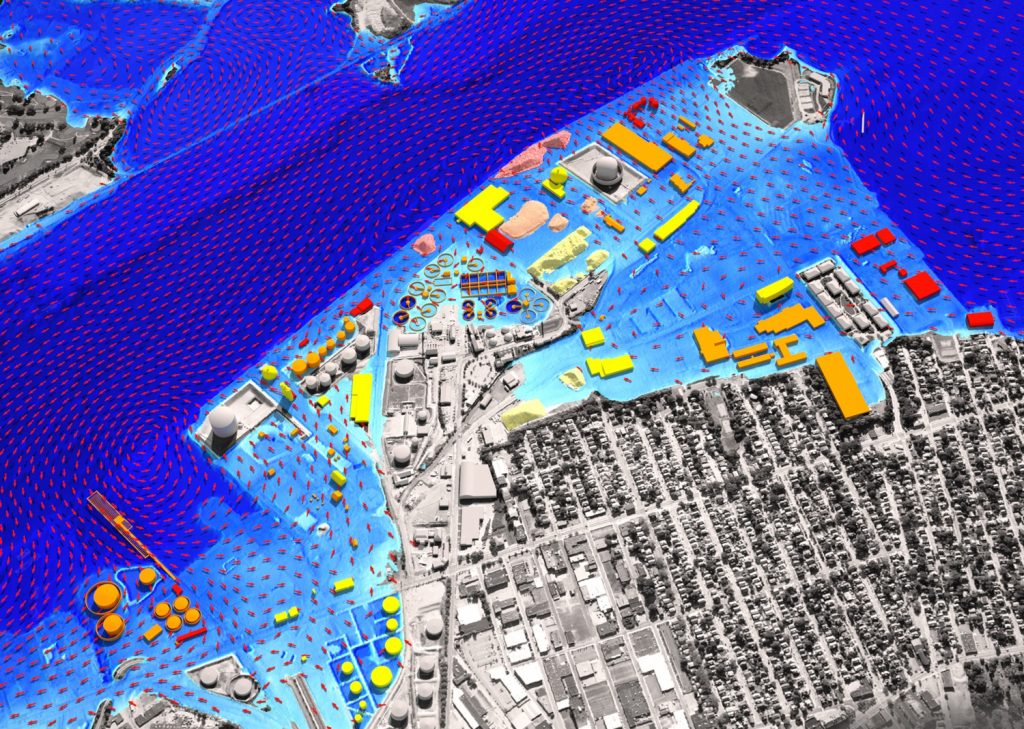
The ability to observe and predict severe weather events and other disasters has improved markedly over recent decades, yet this progress does not always translate into similar advances in the systems used in such circumstances to protect lives, according to a new report by the National Academies of Sciences, Engineering, and Medicine (NASEM).
The report proposes steps to improve public safety and resilience in the face of extreme weather and other disasters. It includes a more cohesive alert and warning system that integrates public and private communications mechanisms and adopts new technologies quickly is needed to deliver critical information during emergency situations. At the same time, better understanding of social and behavioral factors would improve the ways we communicate about hazards, inform response decisions such as evacuations, develop more resilient urban infrastructure, and take other steps to improve weather readiness.
The Coastal Resilience Center of Excellence (CRC), based at the University of North Carolina at Chapel Hill, is among four Department of Homeland Security Science & Technology Directorate Centers of Excellence cited in the report. Others are the National Center for Risk and Economic Analysis of Terrorism Events (CREATE), National Consortium for the Study of Terrorism and Responses to Terrorism (START) and the Critical Infrastructure Resilience Institute (CIRI).
“Integrating Social and Behavioral Sciences Within the Weather Enterprise,” which cites the CRC emphasizes the need for government agencies, industry, and academic institutions involved in the weather enterprise to work together to more actively engage social and behavioral scientists, in order to make greater progress in protecting life and enhancing prosperity. While efforts to improve physical weather prediction should continue, the report says, realizing the greatest return on investment from such efforts requires understanding how people’s contexts, experiences, knowledge, perceptions, and attitudes shape their responses to weather risks.
The report includes references to five CRC projects relevant to concerns raised in the publication:
- “A Tool to Measure Community Stress to Support Disaster Resilience Planning,” led by Dr. Larry Atkinson at Old Dominion University
- “Communicating Risk to Motivate Individual Action,” led by Dr. James Prochaska at the University of Rhode Island (URI)
- “Overcoming Barriers TO Motivate Community Action to Enhance Resilience,” led by Dr. James Opaluch at URI
- “Modeling the Combined Coastal and Inland Hazards from High-Impact Hypothetical Hurricanes,” led by Dr. Isaac Ginis of URI
- “An Interdisciplinary Approach to Household Strengthening and Insurance Decisions,” led by Dr. Rachel Davidson at the University of Delaware
The report can be downloaded at the link above or at https://www.nap.edu/topic/281/earth-sciences.
Weather forecasts and warnings are being made with greater accuracy, geographic specificity and lead time, which allow people and communities to take appropriate protective measures. Yet, as recent hazardous weather events have illustrated, social and behavioral factors — including people’s contexts, experiences, knowledge, perceptions, and attitudes — shape responses to weather risks, says “Integrating Social and Behavioral Sciences Within the Weather Enterprise.”
The report notes that as efforts to advance meteorological research continue, it is essential for government agencies, industry and academic institutions, all part of the weather enterprise, to integrate social and behavioral sciences into their work. This report suggests strategies to better engage researchers and practitioners from multiple social science fields to advance those fields, to more effectively apply relevant research findings, and to foster more cooperation on this endeavor among public, private and academic sectors.
The report advises that a better understanding of social and behavioral aspects of weather readiness will help not only to design more effective forecasts and warnings but also to reduce vulnerability and mitigate risks of hazardous weather well before an event strikes and to better support emergency management and response efforts.
The report includes a special focus on social science research related to road safety, given that road weather hazards are by far the largest cause of weather-related deaths and injuries in the United States. An estimated 445,000 people are injured and 6,000 killed annually due to weather-related vehicle accidents. Understanding why people choose to drive during hazardous weather can help in developing better strategies to discourage risky behavior. Better understanding how drivers get weather-related information can help better inform people who encounter dangerous conditions such as icy roads or low visibility while already in transit.
Some examples of critical research needs highlighted in this report include: understanding how forecasters, broadcast media, emergency and transportation managers, and private weather companies interact and create and disseminate information; understanding how to better reach and inform populations that are particularly vulnerable to hazardous weather; and understanding how new communication technologies affect message design and are changing people’s weather information access, interpretations, preparedness and response.
